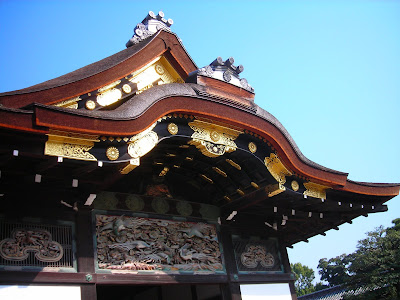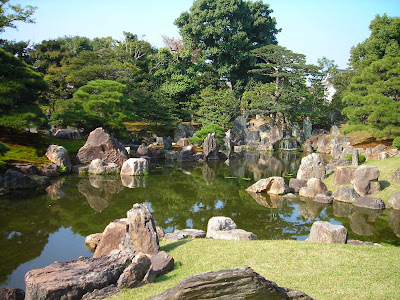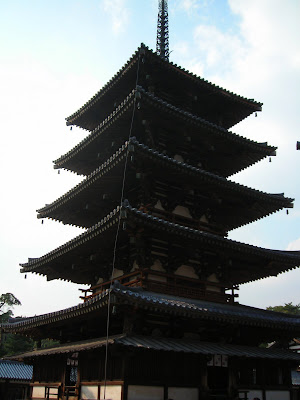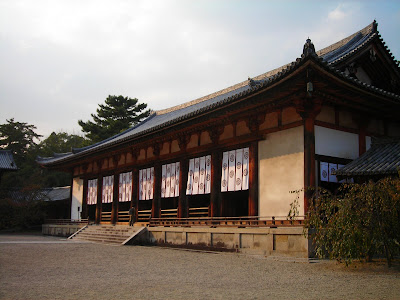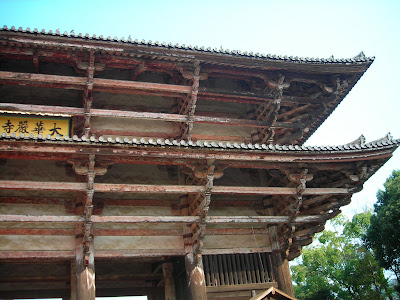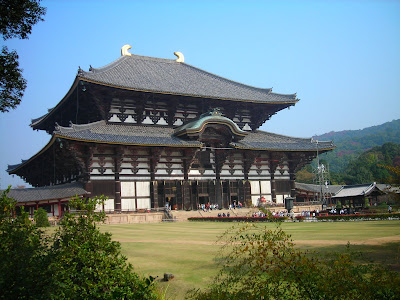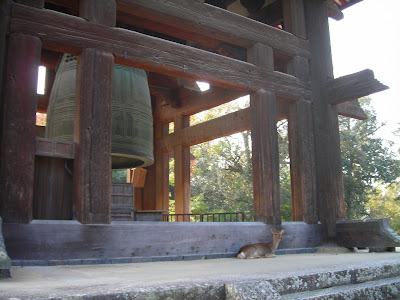Nijo-jo
Day 7 was pretty much my last day in Kyoto. I didn't want to leave, though, without seeing one last famous site--Nijo-jo. Nijo-jo is a famous castle, although not in the typical western sense. It doesn't look at all like Edinburgh castle or something like that--it's not highly fortified, but more like a palace.
It was originally built in the early 17th century by the very famous shogun, Tokugawa Ieyasu, who helped to unify Japan. It is one of the few surviving castles in the country. Visiting a castle was a nice change from the endless procession of temples, I have to say.
It was another beautiful blue morning when I arrived. I was leaving Kyoto earlier that day, so I tried to get there as early as possible. I left my luggage at Kyoto station, and took off for a quick visit to Nijo-jo.
It was originally built in the early 17th century by the very famous shogun, Tokugawa Ieyasu, who helped to unify Japan. It is one of the few surviving castles in the country. Visiting a castle was a nice change from the endless procession of temples, I have to say.
It was another beautiful blue morning when I arrived. I was leaving Kyoto earlier that day, so I tried to get there as early as possible. I left my luggage at Kyoto station, and took off for a quick visit to Nijo-jo.

As you can see, it is an elaborately decorate kind of place. Lots of gold, and all that. It's in fairly good condition; I believe it was actually various parts of it were burned down and rebuilt at various points. But it's still pretty impressive, that overall it survived for so long.
This is the main gate, with a lot of beautiful carvings. I decided to rent an audio tour and I'm glad I did. It provided a lot of interesting information (in English). Inside, the main palace is chockfull of Kano-school paintings; it's very interesting to see them in their original contexts, which you don't always get in art history classes. Nijo-jo also is constructed with the infamous "nightingale floors," which squeak when you walk on them. They still do this now, although I'm sure it's because the people in charge made a special effort!
